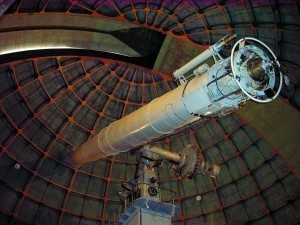Size of Telescope
There are many telescope sizes. Some measure 38.4 x 14.7 x 9.7 inches, but some models are larger, measuring 58.4 x 24.7 x 11.9 inches. The devices used by professional astronomers for studying the stars are even larger.
Classification
These devices are grouped by the electromagnetic (EM) radiation they will be examining. Majority of them are optical. The optical varieties are used for observing the visible parts of the EM spectrum. The other types are used to observe x-rays, gamma rays and infrared.
Except for visible light and radio waves, the rest cannot be seen on Earth. That is why many of these devices are stationed in space. Telescope sizes used in apace are often very large.
Refracting Telescopes
These were among the earliest types invented. It would prove to be popular for centuries. However, the device had its limitations. To be truly effective, bigger and bigger lenses were needed.
Making high quality lens would prove difficult due to their dimensions. Lens sagging caused by gravity was another problem. Imperfections in the glass also caused difficulties.
The Spitzer Space Telescope
This is a device used for observing infrared and was the final one of NASA’s Great Observatories to be launched. The three previously launched were the Compton Gamma Ray Observatory in 1999, the Chandra X-ray Observatory in 1991 and the famous Hubble Space Telescope in 1990. Each of these devices is designed to focus on specific parts of the electromagnetic spectrum.
The device was named in honor of Dr. Lyman Spitzer, Jr., from whom came the idea of space telescopes back in the 1940s. The name was chosen following a contest open to the public. This is unusual because most of these devices are named by astronomers.
What is Infrared?
Infrared is the light generated by heat. The wavelength is longer in terms of micrometers. Every star produces infrared, which the Spitzer is designed to study. In addition, the Spitzer is capable of observing everything the typical optical telescope can.
Infrared cannot be seen by the naked eye. The images the Spitzer relays are therefore given false colors so astronomers can understand them. The Spitzer is perhaps most famous for its dramatic shots of the Andromeda Galaxy. The Andromeda Galaxy is the closet one to the Milky Way, about 2 million light years distant.
The telescope sizes are important, but not as much as their magnification. Other aspects you may want to consider are the weight, angular field of view and resolution.





